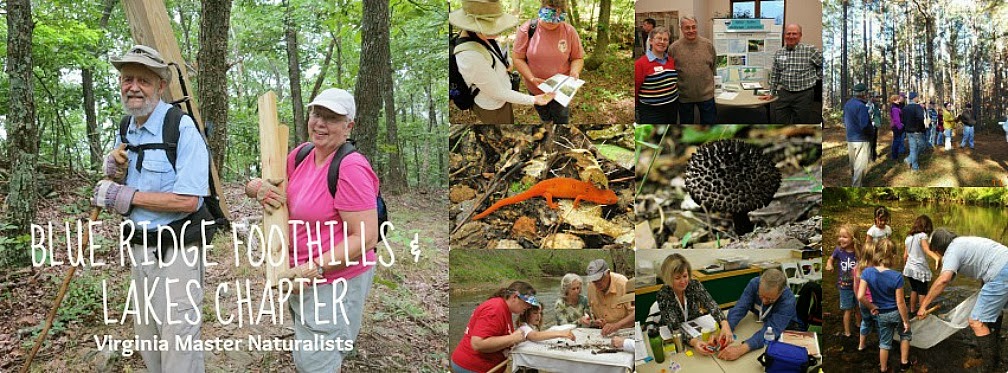Over several hundred years the purple martin (really a swallow) has become totally dependent on humans to provide suitable nesting sites in Eastern North America. Article by Carl Boast ( Chair PR committee BRFAL)
 |
| Bill Pecoraro addressing the group |
Armed with binoculars, cameras and notepads, on saturday, July 9th, several members of the Blue Ridge Foothills and Lakes (BRFAL) Chapter of the Virginia Master Naturalist Program (VMNP) took part in a seminar on Purple Martins provided by Bill Pecoraro at his home in Isle of Pines on Smith Mountain Lake. The program provided credit as Advanced Training for the BRFAL members. Also attending were several members of the Roanoke Valley Bird Club and some independent interested individuals.
 |
| Housing units with several purple martins |
Bill is a retired Environmental Science teacher with diverse interests including, fishing, kayaking, gardening and bee keeping in addition to his passion for Purple Martins. He has established a colony of approximately 140 birds at his dock. Over the 2011 season he has had 40 adults, 40 sub-adults and 60-70 young birds. Over several hundred years the purple martin (really a swallow) has become totally dependent on humans to provide suitable nesting sites in Eastern North America.
 |
| Purple martin eggs |
Decoys placed on some perch sites can reduce successful hawk attacks. Providing suitable nearby housing for Tree Swallows can make nest sites more available and reduce territorial behavior.
Purple Martins are insect eaters and usually eat on the fly. Their diet can include dragon flies, cicadas and occasional butterflies in addition to smaller insects like mosquitoes.
 |
| Lowering the housing to allow for nest checks |
These migrating birds show nest fidelity and often return to the same colony year after year. During their stay here they breed, taking approximately 6 weeks total from egg laying to fledging young birds. They will leave as a colony sometime in mid-August.
When they leave, they go to secondary roosting areas where several hundred birds may congregate. Then they go to major roosting areas (including the Richmond Farmer’s Market) where as many as 10,000 birds may gather before heading to the Gulf of Mexico and on down to Brazil for the winter.
Bill stressed that there is much to know about providing appropriate housing to help, not hinder, the purple martins and that the Purple Martin Conservation Association can provide information and assistance. He advised using a mentor to help save money and get established more quickly, if anyone is interested in beginning a colony of their own.
In addition to Advanced Training opportunities, BRFAL members have been busy participating in many Natural Resource related projects in the area. To learn more about the VMNP and BRFAL in particular go to Virginia Master Naturalist website here or our the Blue Ridge Foothills and Lakes Chapter website www.brfal.org.

No comments:
Post a Comment
Thanks for your comment and interest! NOW GO OUTSIDE!